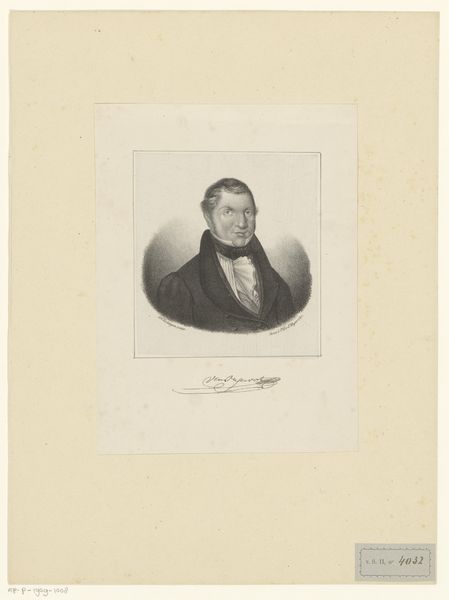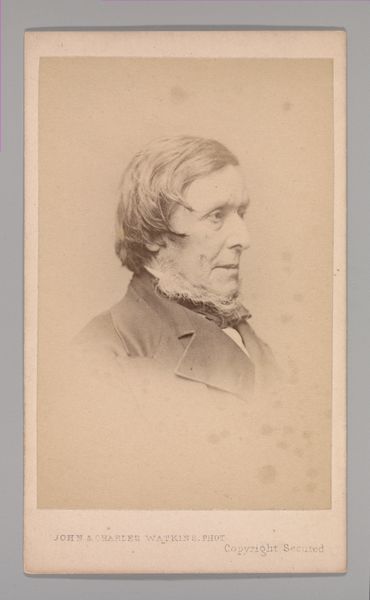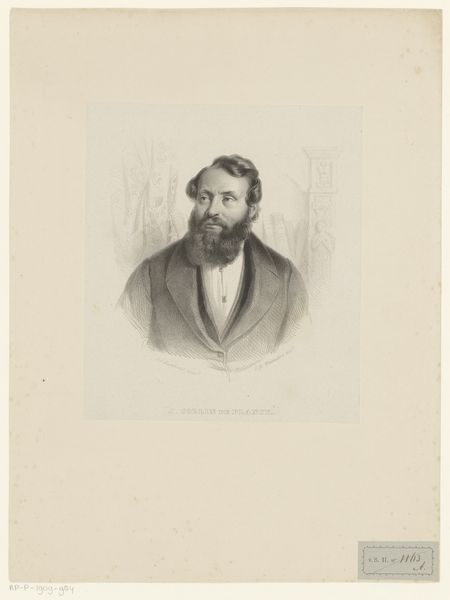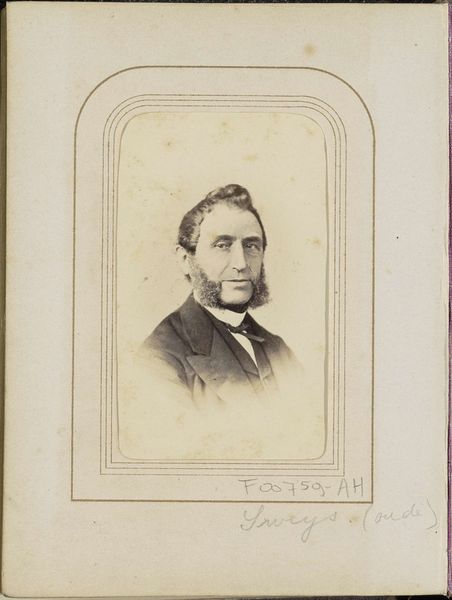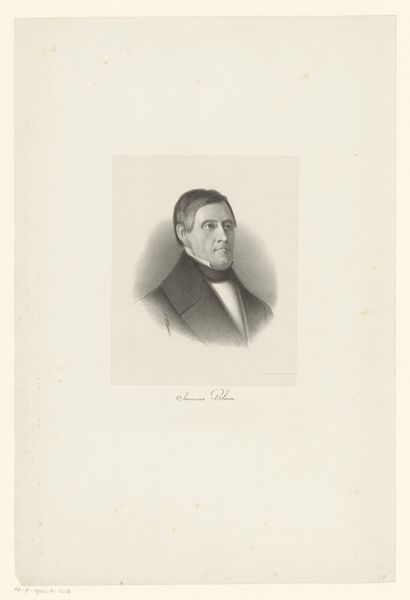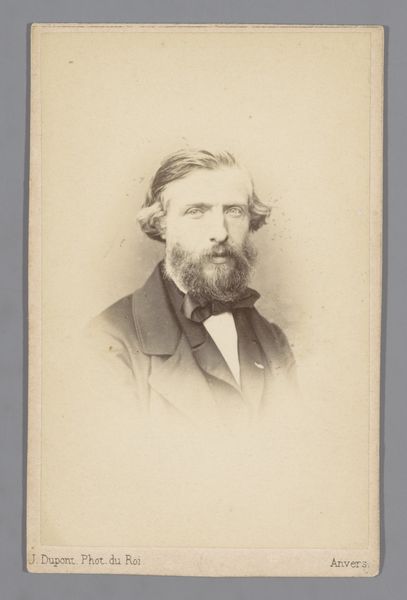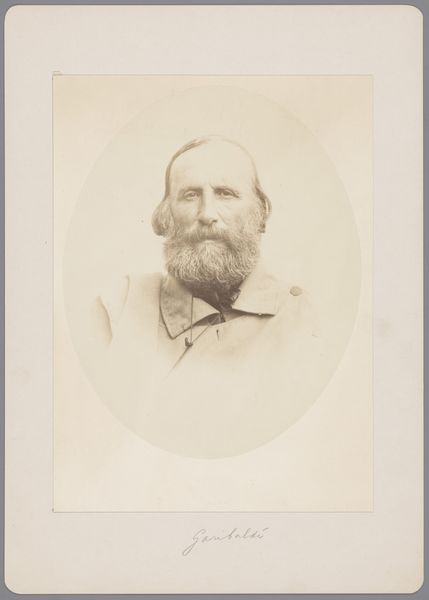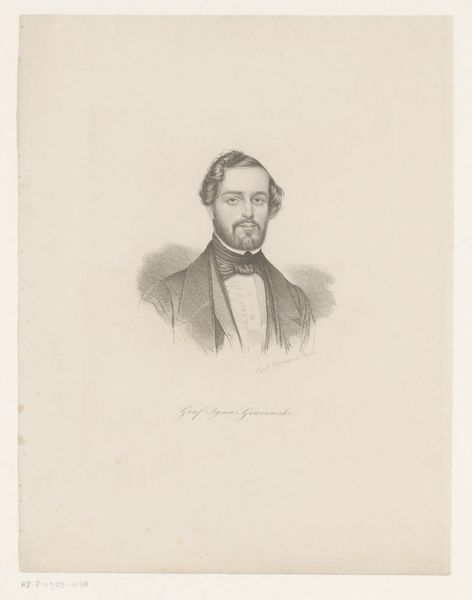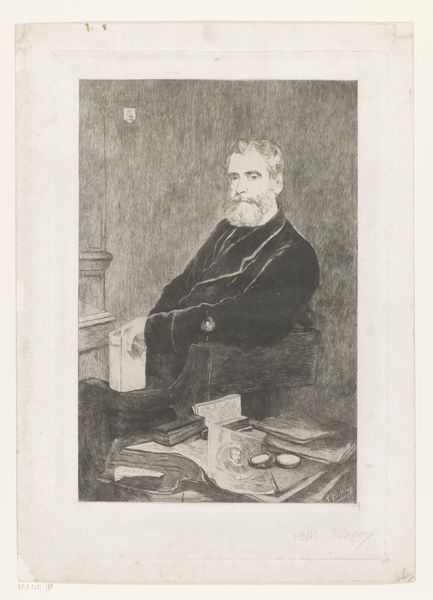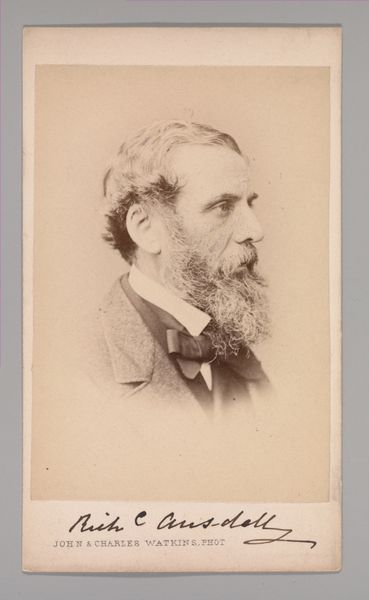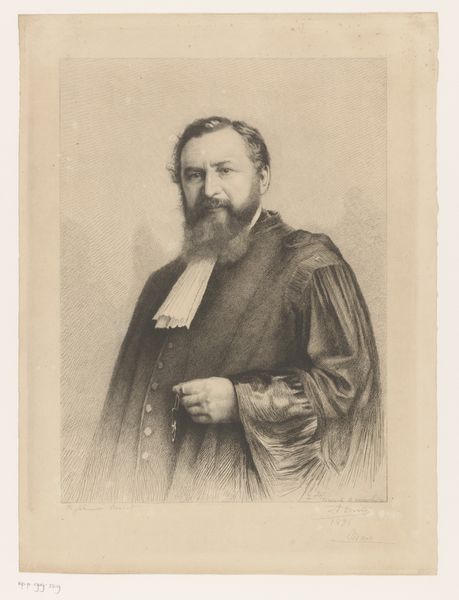
drawing, print, graphite
#
portrait
#
pencil drawn
#
drawing
# print
#
pencil sketch
#
charcoal drawing
#
pencil drawing
#
graphite
#
portrait drawing
#
pencil work
Copyright: National Gallery of Art: CC0 1.0
Curator: Here we have Giuseppe de Nittis’ "Portrait of a Man", executed in graphite, ink, and printmaking techniques. There’s a beautiful stillness about the piece. What are your immediate impressions? Editor: The delicacy is striking. It’s so finely rendered; you can almost feel the texture of the paper beneath the graphite. The subtle tonal variations create a sense of quiet contemplation. Curator: Yes, the cross-hatching lends depth, doesn't it? And think about the enduring power of portraiture, its deep roots across cultures...This work brings to mind ideas of ancestry, lineage, and even the imprint we leave on future generations. Editor: The formal qualities really underscore that, actually. The man's direct gaze holds the viewer's attention, and there’s a striking economy of line. Very few marks are used to describe the essential features, drawing us into that moment of observation between artist and subject. Curator: Exactly! In many cultures, the eyes are believed to be windows to the soul. De Nittis captures something very knowing in his subject’s eyes. The subject's serious expression reminds me of societal expectations and perhaps a stoic resignation. It really raises so many questions about the sitter’s inner life and what was culturally permissible to express outwardly at the time. Editor: The loose application and ethereal wash in the periphery of the image contributes, paradoxically, to a sense of something unresolved and timeless about him as well. It frames him without quite pinning him down. It is interesting, technically, to see that there is use of both additive and subtractive media that ultimately allows a sense of the temporality of image construction. Curator: The negative space really is key, isolating him in the visual plane. Ultimately, art endures to spark a response, and for me, I sense a conversation with history. What do you think you'll carry away after our brief moment considering the work? Editor: It's remarkable how much detail can be communicated with such minimal means; a reminder of the power of restraint in visual expression. It’s made me reflect on the interplay between what’s visible and invisible within an image.
Comments
No comments
Be the first to comment and join the conversation on the ultimate creative platform.

